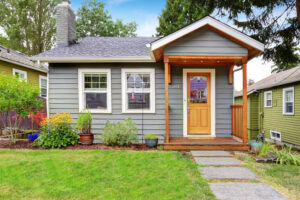 Back in 2021, the average single-family home size grew in response to a pandemic that forced most American families to spend more time, including work hours, in their houses. And due to the record-low interest rates that emerged during the same period, many who had been considering purchasing a new or bigger home pulled the trigger.
Back in 2021, the average single-family home size grew in response to a pandemic that forced most American families to spend more time, including work hours, in their houses. And due to the record-low interest rates that emerged during the same period, many who had been considering purchasing a new or bigger home pulled the trigger.
But since interest rates began escalating in 2022, and as affordability wanes, demand for larger homes has trended downward, according to second quarter 2023 data from the U.S. Census Quarterly Starts and Completions by Purpose and Design and National Association of Home Builders (NAHB) analysis.
The analysts say the average single-family home size today is the smallest recorded since 2010.
The latest data show that the average single-family square floor area in Q2 2023 is 2,415.
According to the analysts, the size of homes today is about 3% higher than lows recorded during the Great Recession (2007-2009).
Home size rose from 2009 to 2015, NAHB analysts say, “as entry-level new construction lost market share.”
A push for more so-called starter homes between 2016 and 2020 led to a decline in home size until the COVID-19 pandemic response led to a need/desire for more space, privacy and separation.
Analysts with the NAHB say 2023’s trend toward smaller houses will likely continue “as housing affordability remains constrained.”
According to the 2022 American Home Size Index, published early this year by American Home Shield (AHS), the size of American homes after WWII ballooned, even as family size decreased. The typical single-family home in 1949 was 909 square feet. In 1950, 15.7% of U.S. homes were reportedly overcrowded; by the early 2000s, with the home size hovering around 1,940 square feet, overcrowding had dipped to 5.7%.
Mentioned in the AHS report, a majority of Americans would opt for a relatively large home. In a 2019 survey, 53% of respondents said they preferred to live in a neighborhood where the houses are larger and farther apart. By July 2021 that figure had risen to 60%.
Of course, attitudes and logistical boundaries vary regionally.
According to the AHS report, the largest homes are in Utah, Colorado, Idaho, Wyoming, and Delaware.
Smaller homes are the trend in Hawaii, New York, Iowa, Main, and Illinois.
States with the most expensive real estate (that is Hawaii, California, New York, Iowa, Main, and Illinois) tend to have smaller homes on average, the researchers from AHS say, while tech hubs and states with newer housing stock (including Utah, Colorado, Idaho, Wyoming, and Delaware) tend to have larger homes.
See detailed quarterly housing size data from the U.S. Census starts report at census.gov and the 2022 Home Size Report at ahs.com.

 theMReport.com Your trusted source for mortgage banking news
theMReport.com Your trusted source for mortgage banking news








